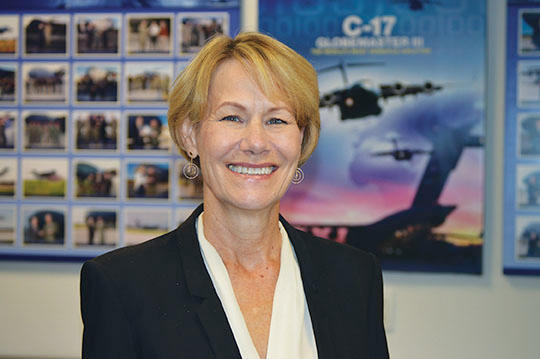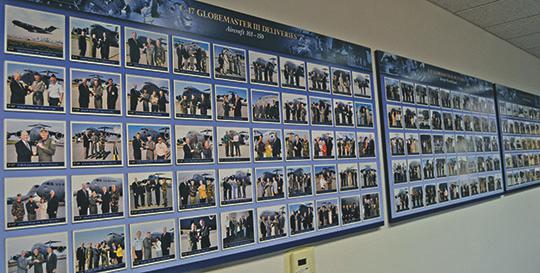For nearly two and a half decades, Long Beach has been “home of the Globemaster C-17 III.”
That slogan has been a mainstay in the city at Cherry Avenue and Wardlow Road near the Long Beach Airport atop Boeing’s manufacturing plant, where thousands of workers have produced the large military transport aircraft since the factory was first opened nearly 25 years ago by then McDonnell Douglas.
The C-17 final assembly plant, however, has now officially come to an end.
In 2013, Boeing announced its decision to shut down the plant because of insufficient orders from the United States Air Force and foreign customers. According to Boeing officials, the C-17 manufacturing facility once employed up to 5,000 people in Long Beach at peak production.

Nan Bouchard is vice president and program manager for the C-17 Globemaster III Program and is part of Boeing’s military aircraft business division. She was appointed to the position in 2013 after serving as vice president and general manager of program management for Boeing Defense, Space & Security. (Photograph by the Business Journal’s Larry Duncan)
The last C-17 built in Long Beach, #279, departed on November 13, for San Antonio, Texas, from where it will be delivered to Qatar. One last C-17, #275, is expected to leave Long Beach soon for the same destination in a final sendoff, according to Boeing officials.
In an interview with the Business Journal, Nan Bouchard, vice president and program manager for the C-17 Globemaster III program, said the C-17 remains an important part of Southern California’s aerospace history. The aircraft’s legacy of quality is a testament to a dedicated workforce, she said, adding that, even in the face of uncertainty leading up to the program’s closure, employees never lost sight of production or customer service.
“Throughout it all, which was a lot of personal stress, no one ever lost focus on the aircraft or on the customers,” Bouchard said. “Every aircraft that has left here has been just as great as the aircraft from five or 10 years ago. There has just been no drop in dedication or quality to the final product and I think it speaks a lot to the professionalism of everybody who worked on the airplane . . . I think we’re all very grateful for that. We’re really sorry to see the program end but happy to have been part of it.”

A wall in one of Boeing’s remaining offices shows the many deliveries of the C-17 Globemaster III throughout its history. (Photograph by the Business Journal’s Larry Duncan)
Since the maiden flight of the initial test aircraft known as T1 on September 15, 1991, the airlifter has “exceeded expectations” in capabilities for long-range and tactical missions, including humanitarian efforts and medical transport operations, while breaking world records, including being able to take off and land on a runway less than 1,400 feet long, she said.
Boeing will continue to provide support and maintenance of the existing C-17 fleet through the company’s Global Integrated Sustainment Program (GISP), which is headquartered in Huntington Beach, Bouchard said. Some of the C-17 program’s 348 suppliers will continue to provide spare parts, she said.
Additionally, Boeing’s commercial aerospace program will maintain its presence in Long Beach, Bouchard said, adding that the company has hired 1,500 engineers in the past two years for work in the local region. Overall, nearly 16,000 employees will remain in Southern California, she said.
